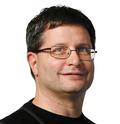Cited By
View all- Zhang QXu LZhang XXu B(2021)Quantifying the Interpretation Overhead of PythonScience of Computer Programming10.1016/j.scico.2021.102759(102759)Online publication date: Dec-2021
- Chamberlain RCytron RFritts JLockwood J(2006)Vision for liquid architectureProceedings 20th IEEE International Parallel & Distributed Processing Symposium10.1109/IPDPS.2006.1639583(8 pp.)Online publication date: 2006
- Zhang QXu LZhang XXu B(2022)Quantifying the interpretation overhead of PythonScience of Computer Programming10.1016/j.scico.2021.102759215:COnline publication date: 1-Mar-2022
- Show More Cited By




